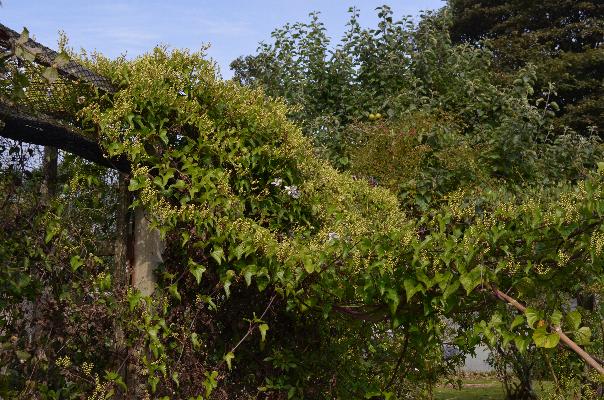Dioscorea batatasHardy down to -20c this is a properly hardy yam, with large edible tubers. It hails from mountain areas of Northern Japan. The following quote is from Plants for the Future Website " "The edible root can be up to 1 metre long and weigh 2 kilos or more if it is grown in a good deep soil. It is the shape of a club, about as thick as an adult's finger at its top it thickens to be the size of their arm at its base. The main problem with this plant is harvesting it, you have to dig deep! Once you get it out, the root has a very nice flavour with a floury texture when baked, it is not as tasty as a sweet potato but is better than most yams and superior to potatoes. It makes an excellent staple food and, since yams are now becoming a more common food in Britain, it has a very good potential as a commercial crop here. What is needed is a simple method of harvesting the root. The tubers can be boiled, baked, fried, mashed, grated and added to soups. They store well and for a long time, and can also be left in the ground and harvested as required in the winter. They contain about 20% starch. 75% water, 0.1% vitamin B1, 10 - 15 mg % vitamin C. Because yams produce a very vertical root, it is possible to grow a number of plants very close to each other, perhaps at 20 - 30cm spacing. You also get a better overall yield if you leave the plants in the ground for two years. Exceedingly high yields are possible, certainly quite a bit higher than potatoes and with none of the disease problems associated with that plant." It behaves as an herbaceous climber, dying down each winter, growing around 4-5M each season, the foliage is attractive but the main reason I grow this is for the scent from the flowers which fills the garden in late summer. Should you wish to grow this as a crop it conveniently produces hundreds of small tubers in the leaf axils each year! |
 |
|
 |